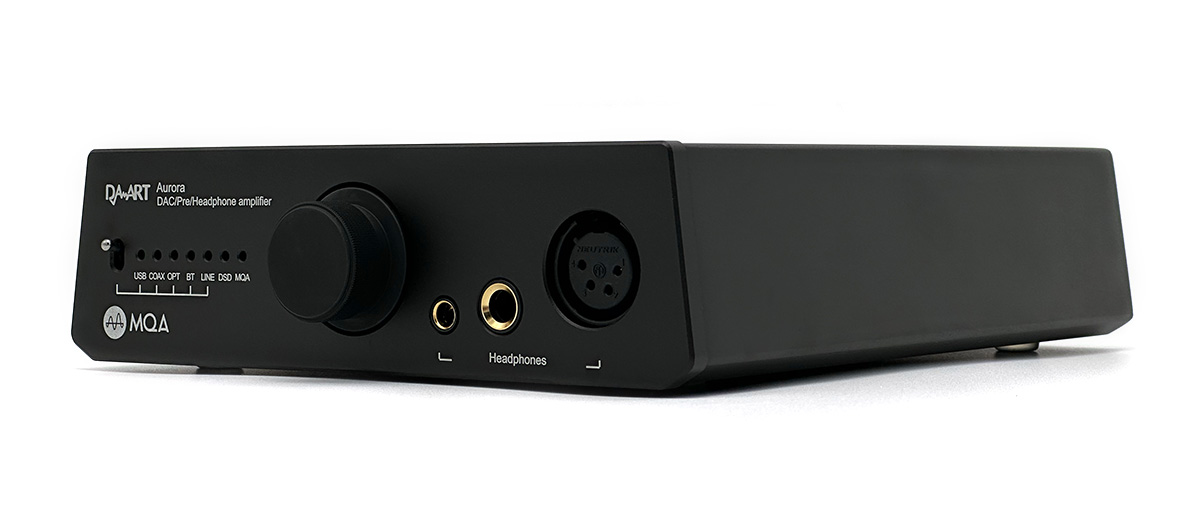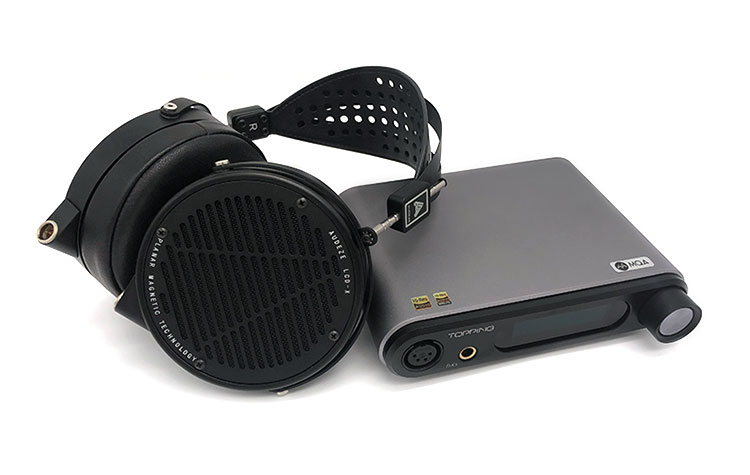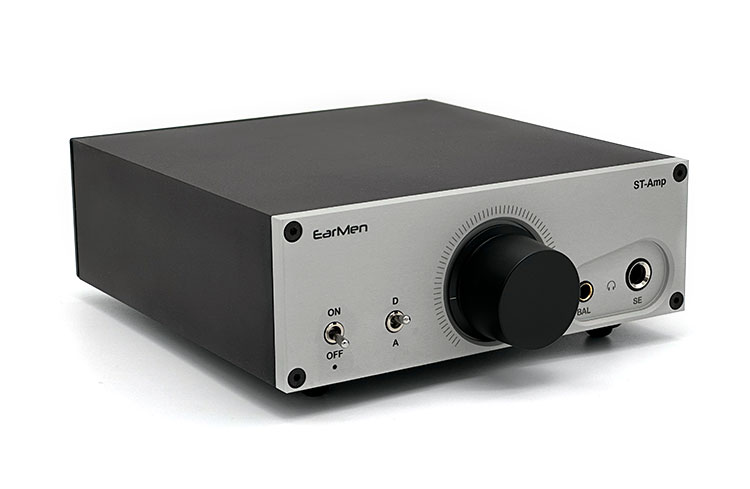Sound Impressions
DAC/AMP
With a lightly mid-centric accent, the Aurora concocts a pretty nice balance with a nice vocal body. It is a bit energetic on shoutier songs that can fatigue on long sessions but a nice airy background compensates.
The details of a deep breath are sprinkled in but the finer dips and valleys for a more lifelike reproduction are flattened. This sacrifices some level of transparency in stringed instruments softening the scene and weakening the exact point of origin.
Reverb on the Aurora is generally big sounding and drawn out. Beats arrive with an authoritative swelling of energy with a nice follow-through of gently dispersed rumble.
Adding some width to the delineation of bass lines, a sense of thickness pulls the Aurora away from immediate honesty. And while it doesn’t muddy up the song, I wish the Aurora could have tightened up the bass region more since I do hear some blurring on certain tracks.
Putting on some classical songs, violins sounded bold with a passing impression of brittleness in each ending stroke. The density of each note, however, is translated well. Where I find the Aurora lacking is the finesse in producing a deep and engaging atmosphere during finer moments.
What I’m trying to say is that the treble region of Aurora is somewhat forgiving. The crisp and rousing electric guitar riff I was waiting for was bursting with energy but the bite is a bit shallow.
DAC
Using a similar headphone matching I used in the DAC/Amp section, I connected the Aurora to the analog inputs of my Burson Conductor 3 Reference to hear if a change in the amplifier benefits the device.
And with an almost identical oomph for kick drums, the DAC entertains with its more encouraging handling of dynamics and detail. For a more accurate composition, the dispersion of subtleties gets to stay and help in the background instead of gathering forward.
The reverb of bass guitars shows a deeper low-end extension. Bearing improved clarity, the heightened characteristic of the arrangement receives a slightly better placement and layering.
Listening to some familiar songs, a raspy singer was able to stay in character more and show its quirks. It gives off an enriched unfold of the emotions being told. The improved dynamics assisted in whispery areas as well, directing vibrato with control.
Saving electric guitars with the added resolution, the DAC flaunted a surer bite. Violins also got a bit lighter and more organic which indicates a more fluid character.
Select Comparisons
Topping DX5
Technical
The digital facilities of the DX5 utilize one additional ES9068AS decoding chip inside suggesting that it has a balanced design.
It, however, misses the same balanced competency of the class-A amplifier of the Aurora once its signal passes Topping’s proprietary NFCA module. The less powerful 1.8W per channel of the DX5 outputs the same SE signal to both jacks upfront.
Some don’t trust the potential compression digital volume controllers may add to the signal like the one used on the DX5. It is still commonly used for a reason though. Pairing up with a proper screen, the DX5 has a deeper set of settings that can be accessed through the multifunction wheel.
Design
When the DX5 came out, it is a bold new vision for Topping to reinvent itself. The same cannot be said about YULONG’s entry which followed the blueprint of its peers.
Especially in gray, the two-tone impression left by the contrast of the black face of the DX5 gives off a more sophisticated look. This is considering that the lightly inclined walls of the Aurora are easy to miss and that the DX5 has a digital display to boot.
A digital control knob means there is a slight play on the volume wheel of the DX5 when pressing and turning.
Performance
Acoustic instruments such as guitars and pianos reverberate more beautifully in the Aurora. The DX5 largely has an overall strict tonality that is both drier and less emotive. The piano keys on Topping felt light with the texture getting a bit smoothed out.
Against the DX5, voices on the Aurora appear silky and have increased width. Vibrato appears on both easily with the DX5 banking in its direct-to-the-point manner.
In a rock performance where the vocalist sings on top of a busy electric guitar mix, the instrument was overtaken by the singer on the DX5. A more balanced synergy between the two can be expected in the other.
Also, when I looked for staging adeptness, the DX5 returned a closer presentation which at least has a nice holographic placement. The Aurora complemented its wider stage with tighter layering for more polished room information.
EarMen ST-Amp
Technical
As an all-in-one, the ST-Amp has an ES9280 to cover the digital-to-analog conversion. But with a limiting USB-only digital input and less interesting 384kHz PCM, 128 DSD over PCM, and no MQA to report, the ST-Amp has a lot to catch up on to justify its higher price tag.
The ST-Amp also boasts a fully balanced amplifier section though not class-A like the Aurora. It has plenty of juice for most headphones out there but it taps out at a lower 1.85W for the same 32W load.
For balanced connections, EarMen went with the more modern 4.4mm jack for all of its inputs and outputs. Yes, the ST-Amp has a balanced input, unlike the RCA-only option of the Aurora.
Design
Narrower and not as deep as the Aurora, the ST-Amp stands taller with an imposing projection thanks to its proud odd-numbered feet. Looking at the Aurora in turn shows a steadier lower profile chassis that doesn’t wobble when accidentally pressed on the rear corners.
Both devices have a centrally positioned volume control, with headphone jacks and analog toggle switches on opposite ends. The Aurora offers more inputs so it includes a set of lights to display the active one.
EarMen considered placing the on/off switch in front of the ST-Amp for easier access instead of the back even though there is enough space. Putting the toggle in between two closely positioned ports like in the Aurora is just less user-friendly.
Performance
The EarMen unit starts with a pretty similar thump to the Aurora then ends with a tighter isolation. What separates the two is the warmer take of YULONG for synths and the scale it gives to images. In staying truer to the objective, the ST-Amp has an easier time sifting through the details.
Without staging the vocals further, the ST-Amp was able to inject more room information through better texture and airiness. It does however appear coarse when compared to the Aurora which is not too far behind in terms of detail.
Since the low-end is a bit lighter on the ST-Amp, the reverb doesn’t have to be lifted to be perceived. Given this, piano compositions are less bold considering that the Aurora also has a thicker twang.
The advantage of going for the more expensive device was reflected when the ST-Amp grabbed the drivers of my headphones with clear-cut control. The amount of information the ST-Amp spitted out on harder mixes is arranged with apt layering and resolution.
Our Verdict
As an all-in-one, the Aurora will most likely gather the attention of those who want a nice piece of equipment that has all the basics inside.
With an extensive list of features and looks to match, the Aurora has also been fitted with a commanding 4W capable Class-A amplifier that accomplished whatever I asked.
Having a powerful amplifier will appeal to those with demanding headgear to match. I do think the 8 o’clock position where the channel imbalance normalizes is a bit restrictive for more efficient gear.
These may be trivial hiccups in technical proficiency for some but I believe the unit’s respect for the tonal balance makes up for it.
YULONG Aurora Technical Specifications
- Input: USB, Optical, Coaxial, Line
- USB: 32bit/768kHz PCM, DSD512, MQAx8
- Optical/Coaxial: 24bit/384kHz PCM, DoP64, MQAx8
- Head amp power: 1.6W (SE), 4W (BAL)
- Head amp THD+N: 0.0005%
- Preamp output level: 6V max (SE), 12V max (BAL)
- Preamp THD+N: 0.0005%
- Dimension: 200mm x 165mm x 52mm (LxDxH)
- Weight: 1kg




